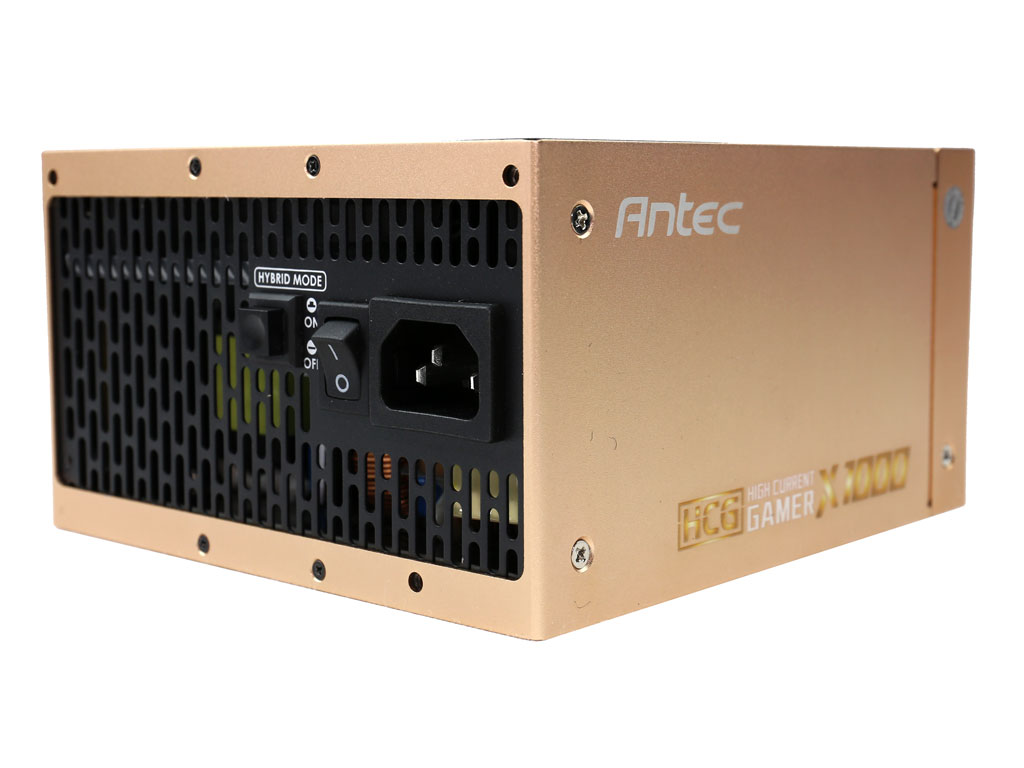Antec HCG1000 Extreme 1000W PSU Review: Good Looks For $150
Why you can trust Tom's Hardware
Final Analysis
Antec took Seasonic's Focus Plus Gold platform and created a distinctive-looking power supply that sells at a compelling price here in the U.S. Anyone looking for high performance and unique aesthetics should add this model to their short list. The coloring might not be to everyone's taste, but at least it stands out from the sea of black-painted enclosures out there.
Besides its snazzy external design and compact dimensions, Antec's HCG1000 Extreme offered exceptional results throughout our benchmark suite. Its only shortcoming was the 3.3V rail's substandard transient response. While it didn't fail the ATX specification's minimum requirements, the data we collected didn't satisfy our expectations, either. In most of the tests we ran, its voltage levels dropped below 3.2V.
We don't know how long Antec intends to sell the HCG1000 Extreme for $149. But as long as you can buy this model for that price, its value score goes through the roof. We're incredibly excited to see the company offering an enhanced version of Seasonic's 1000W Focus Plus Gold PSU for less money. If you have to choose between them, Antec takes the crown.
Beyond its value-oriented victory, the HCG1000 Extreme comes armed with more connectors than Seasonic's implementation, including eight PCIe and 12 SATA connectors, plus a pair of EPS connectors. With 1kW of maximum power and tons of connectivity, this high-end Antec PSU easily supports capable workstations with lots of storage, multiple graphics cards, and advanced platforms.
Our test sample did exhibit one strange problem: its semi-passive mode refused to start sometimes, even as the HCG1000 Extreme idled. Consequently, we had to run all of our tests with the fan spinning normally. Despite reaching out to Antec and Seasonic for an explanation, and then completely dismantling the PSU in search of a culprit, we're at a loss as to why our sample behaved so strangely.
MORE: Best Power Supplies
MORE: How We Test Power Supplies
MORE: All Power Supply Content
Disclaimer: Aris Mpitziopoulos is Tom's Hardware's PSU reviewer. He is also the Chief Testing Engineer of Cybenetics, and developed the Cybenetics certification methodologies apart from his role on Tom's Hardware. Neither Tom's Hardware nor its parent company, Purch Media, are financially involved with Cybenetics. Aris does not perform the actual certifications for Cybenetics.
Get Tom's Hardware's best news and in-depth reviews, straight to your inbox.
Current page: Final Analysis
Prev Page Performance, Value, Noise & Efficiency
Aris Mpitziopoulos is a contributing editor at Tom's Hardware, covering PSUs.
-
richardvday I am very curious why so many 1000W or larger PSU's ? How many of these do they actually sell ? How many people need a 1000w PSU ? 500-600W seems the sweet spot that most people would need. I have an 850W that I have been kicking myself in the head for ever since really. I need 500W so my efficiency sucks, wasting energy.Reply -
totalinsanity4 PSUs are actually most efficient when you're at about half load, so people with 500-600W loads will actually be seeing a slightly lower power bill with a 1000W PSU than, for instance, a 650W oneReply -
crmaris modern PSUs featuring LLC resonant converters also have good efficiency under light loads regardless capacity, given that their design is good. With LLC Burst Mode efficiency under light loads vastly improves.Reply
